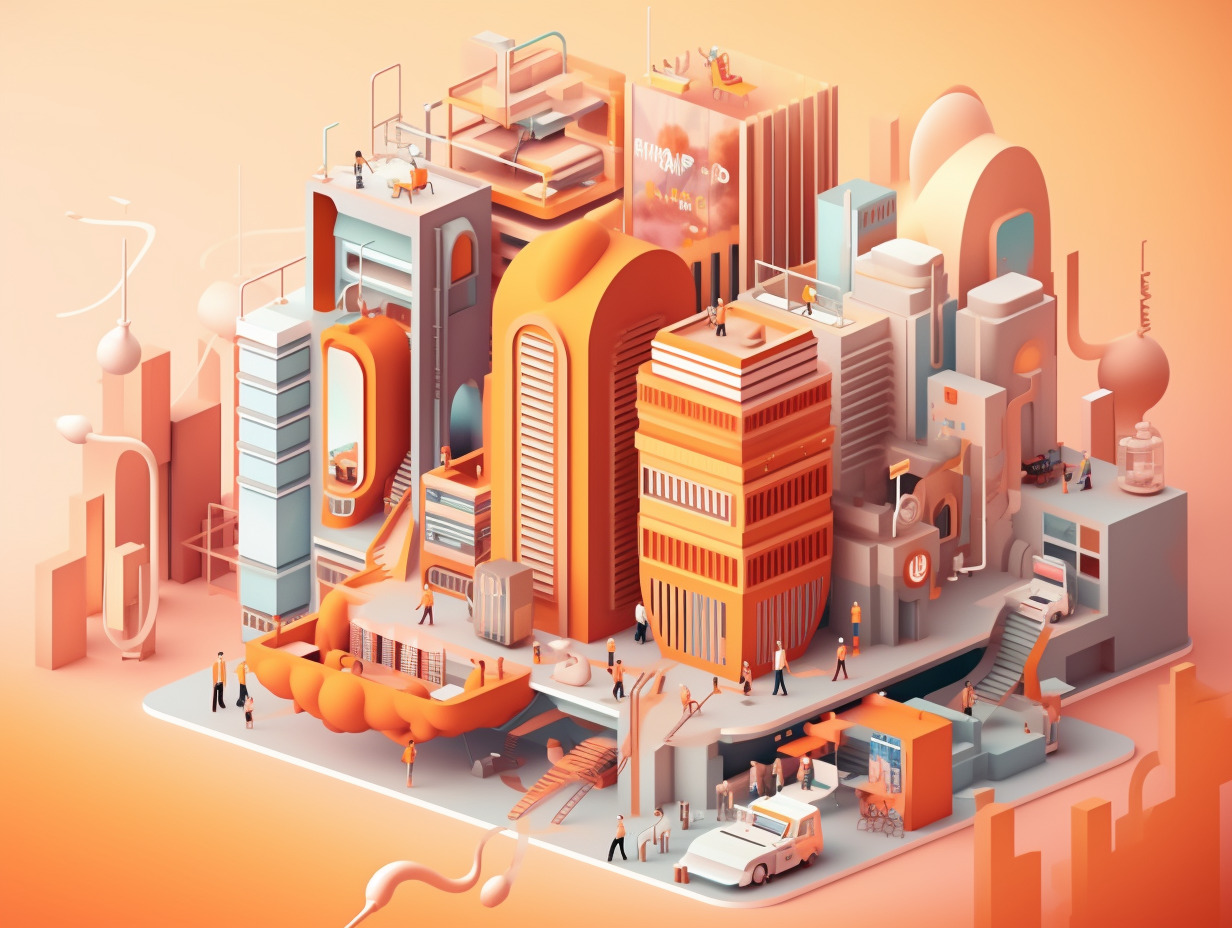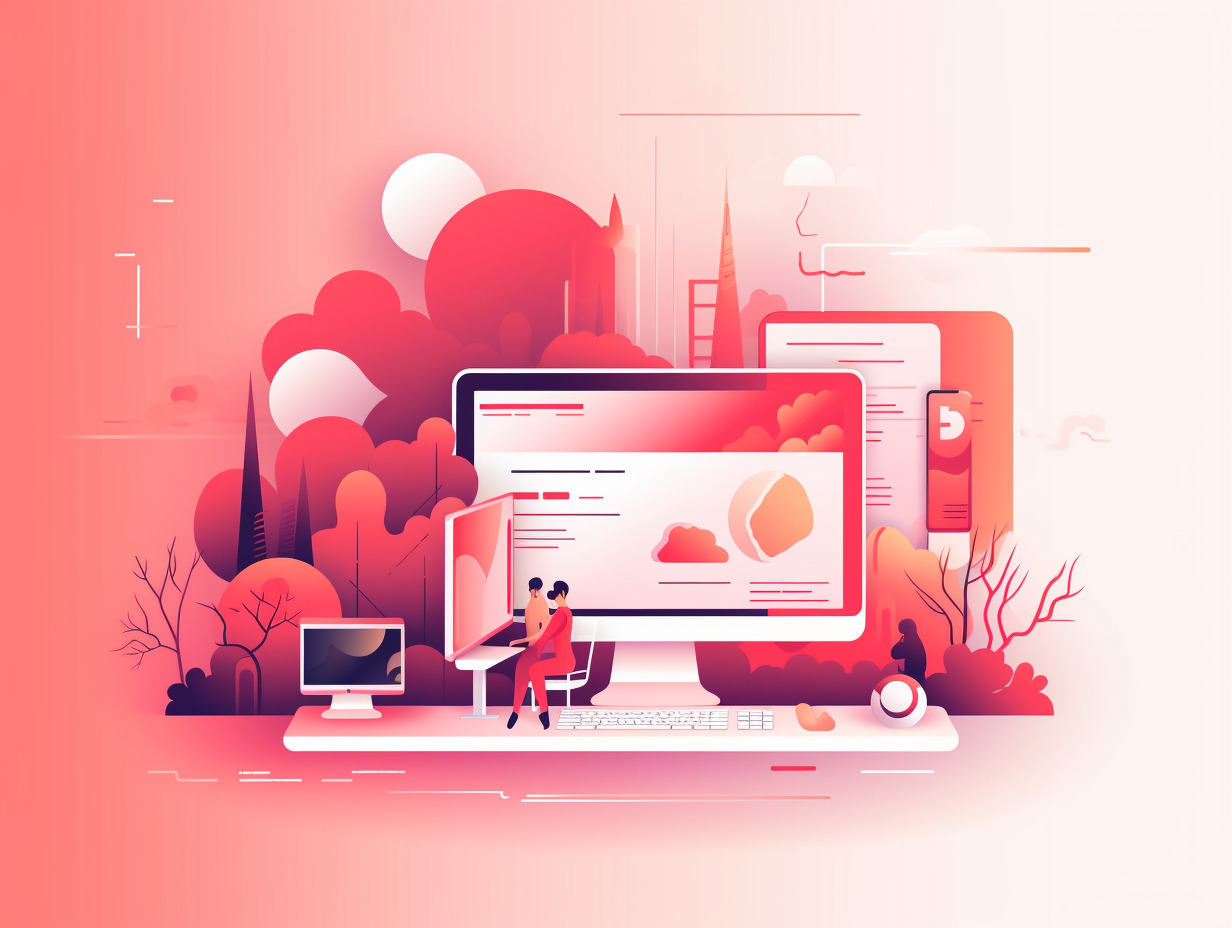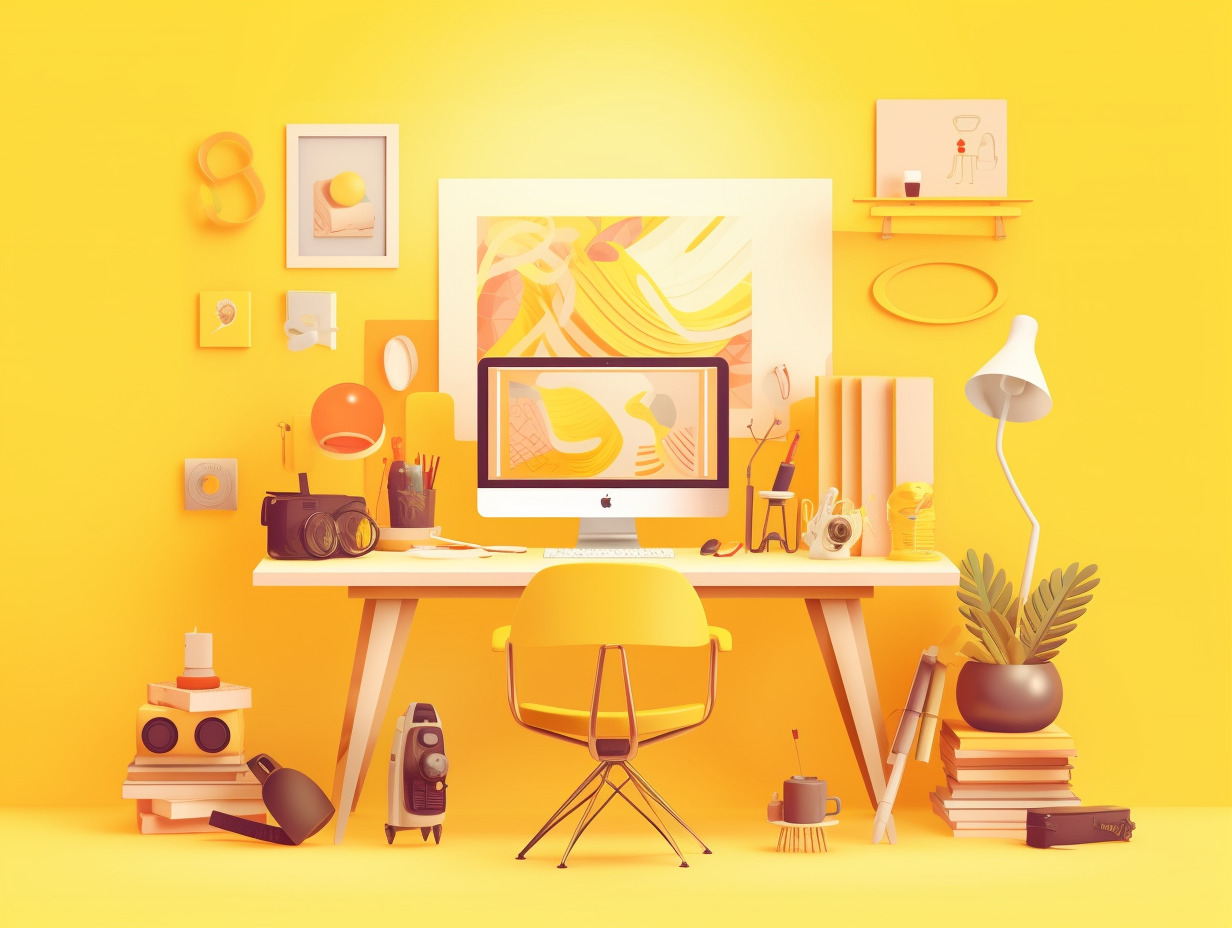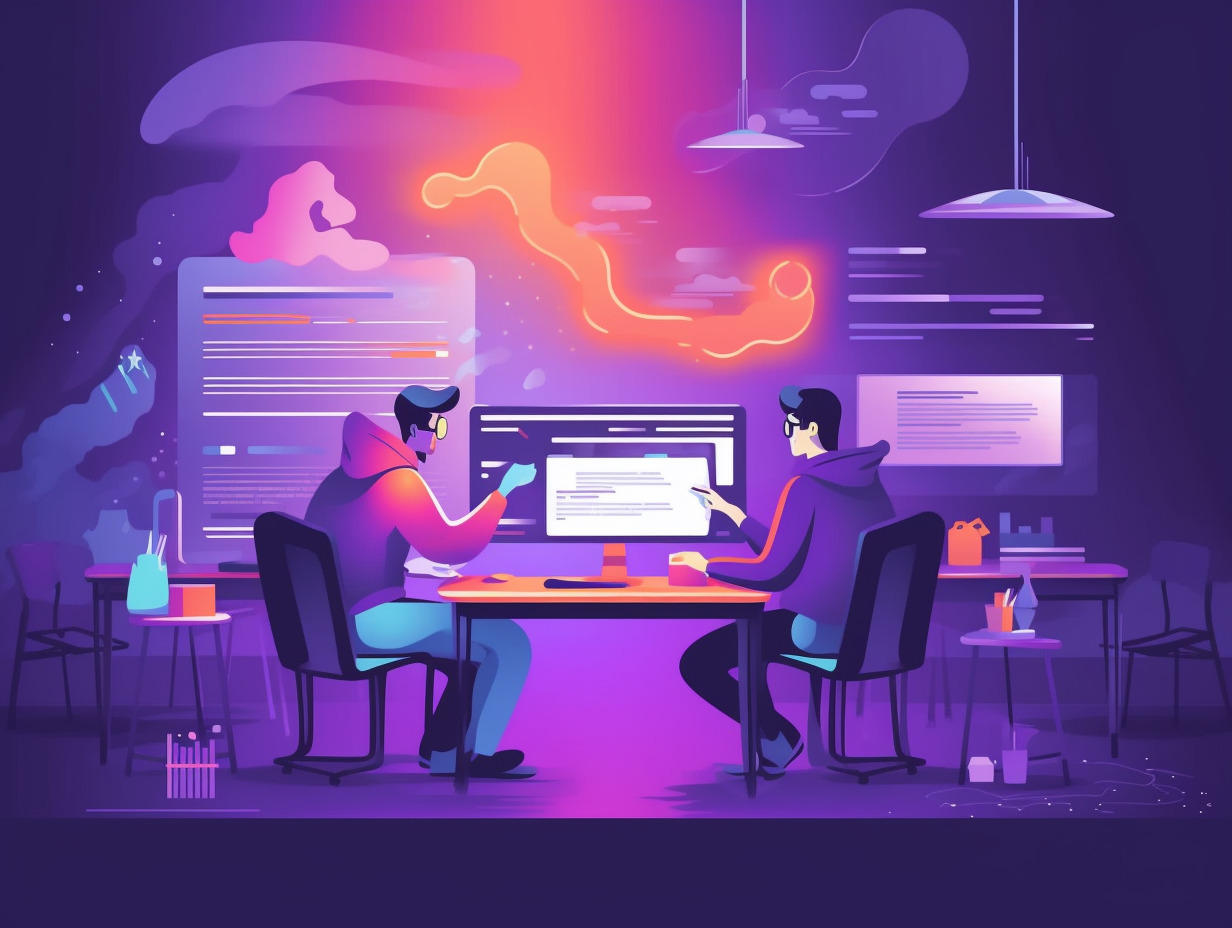
What is Graphic Design and what is it for?
Graphic design is a professional craft where designers create visual content to communicate messages effectively. By utilizing visual hierarchy, page layout techniques, typography, and imagery, designers craft visuals that cater to specific user needs and enhance user experience.
Graphic design spans various mediums, including print materials like brochures and posters, digital platforms such as websites and mobile apps, and branding elements like logos and visual identities. The primary goal is to convey messages, evoke emotions, and engage audiences through visually compelling designs.
Key elements of graphic design include:
• Typography: The art of arranging and selecting typefaces to ensure readability and convey the desired tone and personality of a design.
• Color Theory: The study of colors and their psychological impact, enabling designers to create harmonious and impactful color palettes.
• Composition: The arrangement of elements within a design to create balance, hierarchy, and visual flow, ensuring a cohesive and engaging visual experience.
Graphic design is essential for creating effective visual communication, enhancing brand identity, and improving user experience across various industries. From advertising and marketing to web design and branding, graphic designers play a crucial role in shaping how messages are perceived and understood.
Roles and Responsibilities of Graphic Designers
Graphic designers play pivotal roles in shaping visual communication across various industries. In this section, we delve into the diverse roles and responsibilities of graphic designers, shedding light on the skills and competencies they possess. By exploring the collaborative nature of graphic design and its interaction with clients and fellow professionals, we aim to provide a comprehensive understanding of the vital contributions made by these creative individuals.
Graphic designers fulfill a range of primary roles and functions. They are responsible for conceptualizing, designing, and executing visual materials that effectively communicate messages. Whether it’s creating eye-catching advertisements, designing intuitive user interfaces, or crafting compelling branding elements, graphic designers bring ideas to life through their creative vision and technical expertise. They blend aesthetics with functionality to deliver impactful designs that resonate with the intended audience.
To excel in their profession, graphic designers must possess a diverse set of skills and competencies. Creativity lies at the heart of their craft, enabling them to think innovatively and develop visually striking solutions. Additionally, technical proficiency is crucial, as designers must be adept at utilizing various software tools, staying up-to-date with design trends, and adapting to evolving technologies. Problem-solving ability is another valuable skill, as designers often encounter challenges that require them to find creative solutions while meeting project objectives.
Moreover, graphic design is a collaborative endeavor that involves interaction with clients and other professionals. Designers work closely with clients to understand their goals, target audience, and brand identity, ensuring that their designs align with the client’s vision. They also collaborate with fellow designers, copywriters, marketers, and developers, among others, to bring cohesive projects to fruition. Effective communication and the ability to work in a team environment are crucial for successful collaboration within the graphic design industry.
Applications of Graphic Design
Graphic design permeates various industries, leaving an indelible mark on advertising, marketing, web design, and beyond. In this section, we explore the wide-ranging applications of graphic design and its transformative role in shaping brand identity, user experience, and visual storytelling. By providing examples of successful graphic design campaigns and projects, we showcase the immense creative power wielded by graphic designers across different domains.
Graphic design finds its application in a multitude of industries, contributing to the success of advertising, marketing, web design, and more. In advertising, graphic designers craft visually compelling advertisements that grab attention, convey messages, and entice audiences. In the realm of marketing, they create engaging visual content for social media, email campaigns, and print materials to promote products or services effectively. Additionally, graphic design plays a pivotal role in web design, where designers create intuitive user interfaces, captivating website layouts, and interactive elements that enhance the overall user experience.
Beyond the functional aspects, graphic design plays a vital role in enhancing brand identity. Through skillful use of typography, color palettes, and visual elements, designers create distinctive brand aesthetics that align with a company’s values, personality, and target audience. Effective brand identity design helps businesses establish a memorable presence, forge emotional connections with customers, and differentiate themselves in a crowded marketplace.
Moreover, graphic design has the power to breathe life into visual storytelling. Designers use their artistic abilities to craft narratives through visuals, creating cohesive and impactful designs that convey messages and evoke emotions. Whether it’s designing an eye-catching book cover, developing infographics that simplify complex information, or creating illustrations that enhance storytelling, graphic designers are masters of visual communication.

Evolution and Future of Graphic Design
The field of graphic design has undergone a remarkable evolution, shaped by historical developments and advancements in technology. In this section, we trace the journey of graphic design as a profession, explore the profound impact of technology and digital tools, and discuss emerging trends that provide insights into its potential future directions. By examining its evolution and embracing the possibilities that lie ahead, we gain a deeper understanding of the dynamic nature of graphic design.
To comprehend the present state of graphic design, it is essential to reflect upon its historical development. Graphic design emerged as a distinct discipline during the Industrial Revolution, when the need for visual communication increased exponentially. From early forms of typography and printing methods to the birth of modern design movements, such as Bauhaus and Swiss Style, each era contributed to the growth and evolution of graphic design as we know it today. Design pioneers and their revolutionary works paved the way for new approaches, techniques, and design philosophies that continue to shape the profession.
Technology has played a transformative role in graphic design, revolutionizing the way designers conceptualize, create, and present their work. The advent of computers and design software enabled designers to explore new dimensions of creativity and efficiency. Digital tools empowered designers to experiment with various design elements, manipulate images with precision, and create intricate illustrations. The rise of the internet and digital platforms further expanded the possibilities for graphic design, allowing designers to reach global audiences and collaborate remotely. Moreover, advancements in printing technology have brought forth new possibilities in the realm of print design, with innovations such as 3D printing and augmented reality pushing the boundaries of graphic design even further.
As we look towards the future, several emerging trends offer glimpses into the potential directions of graphic design. One such trend is the integration of design with technology, as designers embrace interactive and immersive experiences through motion graphics, virtual reality, and augmented reality. Additionally, sustainable and environmentally conscious design practices are gaining prominence, with a focus on eco-friendly materials, minimalistic aesthetics, and responsible production processes.
| Section | Details |
|---|---|
| What is Graphic Design? | Graphic design is a craft where professionals create visual content to communicate messages effectively. It spans various mediums, including print, digital platforms, and branding. |
| Key Elements |
|
| Roles and Responsibilities | Graphic designers conceptualize, design, and execute visual materials. They blend aesthetics with functionality to deliver impactful designs. They work collaboratively with clients and other professionals. |
| Applications | Graphic design is used in advertising, marketing, web design, and branding. It enhances brand identity, user experience, and visual storytelling. |
| Future Trends | Emerging trends include integration with technology (e.g., virtual reality), sustainable design practices, and inclusive design to cater to diverse audiences. |
Conclusion
In conclusion, graphic design is a captivating and influential field that merges creativity, technology, and communication. Through our exploration of what graphic design truly entails, we have gained a comprehensive understanding of its definition, significance, and diverse applications across various industries.
Graphic design encompasses the art of visually arranging elements to effectively communicate messages, evoke emotions, and engage audiences. It encompasses a wide range of mediums, including print materials, digital platforms, and branding. The importance of typography, color theory, and composition in graphic design cannot be overstated, as these foundational elements form the backbone of visually striking and cohesive designs.
We have also delved into the roles and responsibilities of graphic designers, recognizing their creativity, technical proficiency, and problem-solving abilities. Graphic design is a collaborative endeavor, involving interaction with clients and other professionals, which highlights the dynamic and interconnected nature of the field.
The applications of graphic design are vast and influential. From advertising and marketing to web design, graphic designers leave their artistic imprint, enhancing brand identities, elevating user experiences, and weaving visual narratives that captivate audiences. Successful graphic design campaigns and projects serve as testament to the power of this creative discipline.
Moreover, we have traced the historical development of graphic design, acknowledging the impact of technology and digital tools. As we look towards the future, emerging trends offer exciting possibilities, such as the integration of design with technology, sustainability, and inclusivity.
In a visually-driven world, graphic design continues to evolve and shape the way we communicate and engage with the world around us. It is an art form that blends aesthetics, functionality, and strategic thinking to convey messages and captivate audiences. Whether through captivating advertisements, compelling branding, or visually stunning websites, graphic design leaves an indelible mark on our daily lives.
In our journey to understand “what is graphic design,” we have unraveled its essence, explored its diverse applications, and envisioned its promising future. Aspiring designers and enthusiasts alike can appreciate the immense creativity, skill, and impact that graphic design brings to the forefront. Embrace the world of graphic design, and let your creative spirit soar as you join the ranks of those who shape the visual landscape with their artistic vision and design expertise.
Have you considered implementing a graphic design client portal? SuperOkay might just be the right fit to take your design work to the next level.
Frequently Asked Questions
What is graphic design?
Graphic design is the art and practice of creating visual content to communicate messages. Designers use typography, imagery, color theory, and layout techniques to craft visuals that meet specific user needs and enhance the overall user experience. This discipline spans various mediums, including print materials, digital platforms, and branding elements.
What are the main elements of graphic design?
The main elements of graphic design include:
• Typography: The arrangement and selection of typefaces to ensure readability and convey the desired tone.
• Color Theory: The study of colors and their psychological impact, enabling the creation of harmonious color palettes.
• Composition: The arrangement of elements within a design to create balance, hierarchy, and visual flow.
How does graphic design enhance brand identity?
Graphic design enhances brand identity by creating distinctive visual elements that align with a company’s values and personality. Through the skillful use of typography, color palettes, and imagery, designers develop logos, visual identities, and branding materials that establish a memorable presence, forge emotional connections with customers, and differentiate businesses in a crowded marketplace.
What skills are essential for a graphic designer?
Essential skills for a graphic designer include:
• Creativity: The ability to think innovatively and develop visually striking solutions.
• Technical Proficiency: Expertise in using design software and staying updated with design trends and technologies.
• Problem-Solving: The capability to find creative solutions to design challenges while meeting project objectives.
• Collaboration: Effective communication and teamwork skills to work with clients and other professionals.
What are the future trends in graphic design?
Future trends in graphic design include:
• Integration with Technology: Embracing interactive and immersive experiences through motion graphics, virtual reality, and augmented reality.
• Sustainable Design: Focusing on eco-friendly materials, minimalistic aesthetics, and responsible production processes.
• Inclusivity: Designing with a focus on accessibility and inclusivity to ensure that designs are usable by diverse audiences.
Are you already using a graphic design Client Portal? SuperOkay gives you 1 graphic design client portal free forever to start creating professional-looking Client Portals, custom branded to your clients’ brands – Start today by clicking here!

How to Find Web Design Clients in 2023
In the vast realm of the internet, learning how to find web design clients is crucial to your success. These clients are the lifeblood of your business, the ones who w…

How to Become a Freelance Web Designer
In today’s digital era, the demand for skilled web designers is skyrocketing. Companies and individuals alike are in constant need of professionals who can creat…

Web Design Trends in 2023
In the ever-evolving world of web design, staying up-to-date with the latest trends is crucial to staying relevant and delivering exceptional user experiences. As tech…

Web Designer vs. Web Developer: The Main Differences
Web designer vs web developer are two distinct yet interconnected jobs that play crucial roles in creating and maintaining websites. Web design involves the artistic a…